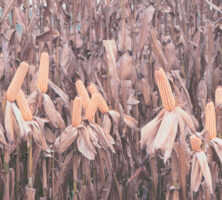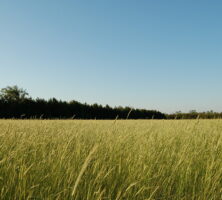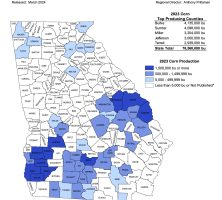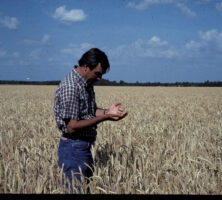Grains, particularly corn, have been important to Georgia’s citizens, livestock, wildlife, and general economy since the state’s founding. Native Americans and European settlers depended on grains to sustain life and trade. Today Georgia citizens and livestock consume billions of pounds of grains each year. Some of this grain is produced by Georgia farmers, and the rest is imported from other states and countries.
Grain Types and Uses
Grains produced in Georgia include corn, grain sorghum, pearl millet, wheat, oats, barley, and rye. Additional crops consumed as a grain or forage include triticale (a high-protein wheat-rye cross) and millets (proso, foxtail, and browntop). At one time or another all have been produced or are still produced in Georgia. Corn, sorghum, and millet are produced only in the summer months; wheat, oats, barley, rye, and triticale are grown during the winter. Each is distinct in its use and production.
Grains are grasses (monocots) that bear seeds. These seeds can be processed by either dry milling or wet milling for human consumption or for industrial use. The plants themselves can serve as forage for livestock and wildlife or can be consumed directly as a feed grain. Many animals, including poultry, horses, cattle (both beef and dairy), and swine depend on grains, especially corn, as their main feed source. For instance, the broilers, layers, and breeding stock of the poultry industry alone consume more than Georgia farmers produce in a year. Georgia farmers produce about 50-70 million bushels per year. This means that corn as well as other grains must be imported, making Georgia a grain-deficit state.
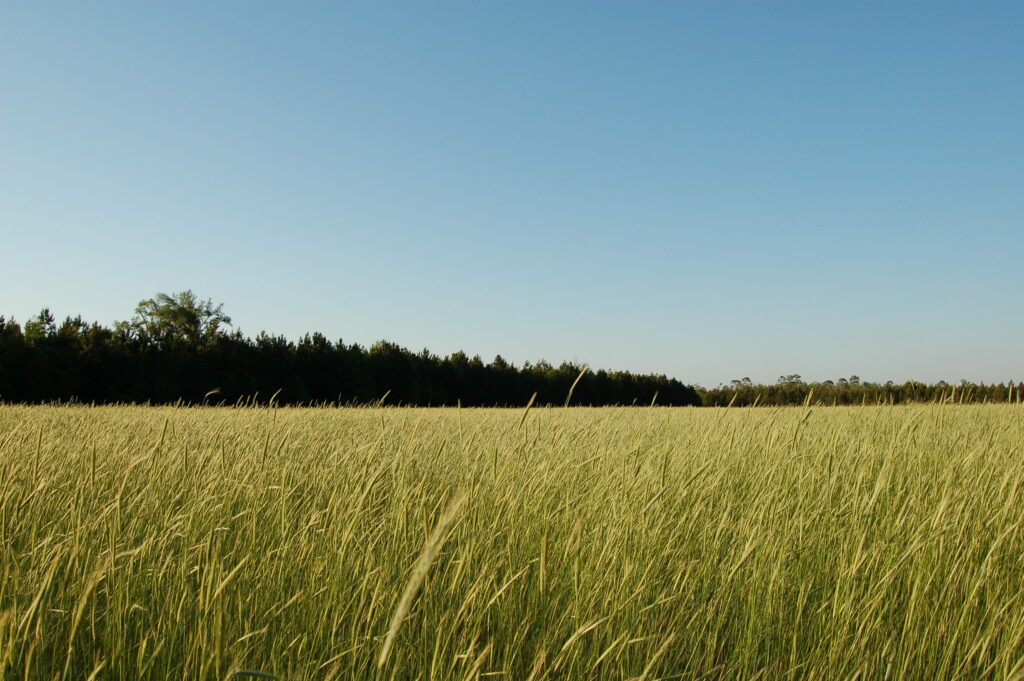
Grain Production
Grain production in Georgia has diminished over the years as a result of prolonged droughts and poor prices, and this decline has profoundly affected the local economies of many rural counties. From the 1950s to the early 1980s, grain elevators dotted the countryside. Since then elevators have closed as farmers switch to more profitable crops or quit farming altogether. This loss in infrastructure has made it difficult and more expensive for today’s grain farmers, who are forced to travel further from their farms to market their grain crops or build their own storage facilities for later delivery to the market.
Most of the corn and wheat production in Georgia occurs in the southern counties. These areas are generally characterized by gently sloping or flat lands of well-drained soils, mostly of the clay loam to sandy loam soil types. Grains generally require a soil pH of 6.0 to 7.0 for good production. Georgia soils are acidic and inherently low in nutrients, so soil amendments like lime and fertilizer must be made yearly to sustain good crop production. Because these soils are prone to drought, supplemental water is needed for the consistent production of such grain crops as corn and grain sorghum, which are easily affected by dry weather. Approximately 65 to 70 percent of Georgia’s corn crop is irrigated, but less than 20 percent of the other grain crops are irrigated.
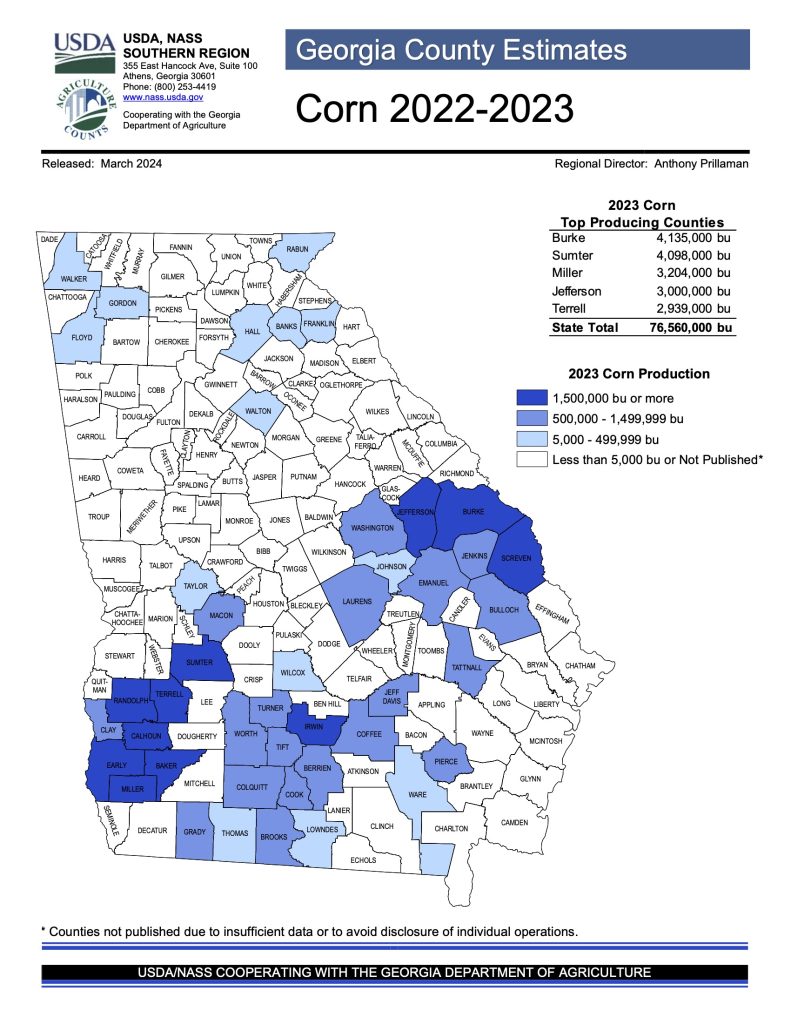
The most acreage harvested in corn in Georgia was 4,508,000 acres in 1935. Farmers then averaged about 10.5 bushels per acre and received $.67 per bushel. The five-year average for harvested corn is about 174 bushels per acre (17.5 times that in 1935) on less than 500,000 acres per year. Over the past five years, farmers average selling a bushel of corn for about $5.58 per bushel. Primarily all of Georgia’s corn crop is sold in the animal feed market.
Summer Grains
The major summer grain produced in Georgia is corn, and there are several types: flour, flint, dent, pop, and sweet. All of the corn raised for grain in Georgia is of the dent type (so called because the crown of the kernel has a dent left by the collapse of the endosperm as it dries). A few acres of popcorn are grown as a specialty crop. Sweet corn is produced by farmers and home gardeners, and it is distinguished from the other types in that the endosperm consists primarily of soluble sugars rather than starch. It is highly valued in the fresh, edible market and is sweet to the taste. Sweet corn is produced commercially mostly in the southwestern areas of Georgia.
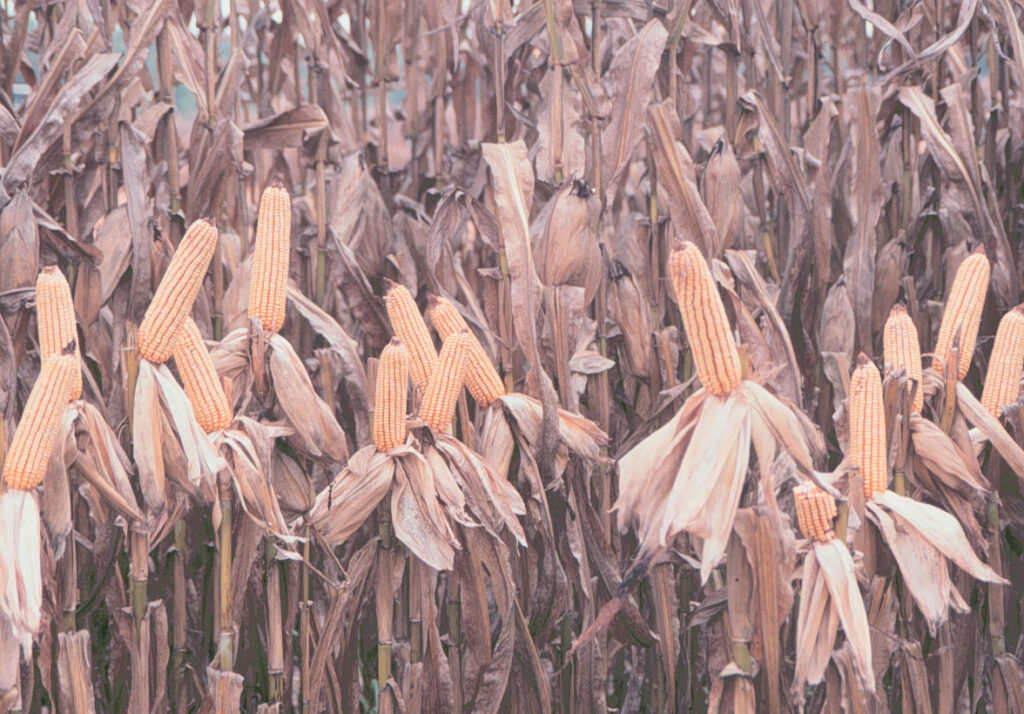
Most of the corn grown in Georgia is used in animal feed if it meets the quality standards of the industry. Aflatoxin, a by-product of the fungus Aspergillus flavus, often contaminates dryland corn production but is generally not a problem in irrigated fields. This contaminate in high levels (greater than twenty parts per billion) reduces feed efficiency and therefore reduces the quality and desirability of the grain. In some years a high incidence of A. flavus makes it difficult for growers to market their corn.
Other summer crops, such as grain sorghum, are of lesser importance but are still produced where local markets are available. Some grain sorghum is favored by plantation owners who feed wildlife for hunting. Pearl millet is currently a new “old” grain for Georgia farmers. Unfortunately this grain is better adapted to some soils with low water-holding capacity and poorer fertility but cannot produce as much grain under irrigation as the other grain crops. While developed as a food/feed substitution for corn, lower yields prevent the adoption of pearl millet even though it is favored as a feed for poultry, wildlife, and songbirds.
Winter Grains
The major winter grain in Georgia is soft red winter wheat. (Several types of wheat are grown in the United States: hard red winter, hard red spring, soft red winter, white, and durum.) Soft red winter wheat is used mostly for baked goods such as cracker, pastries, and cookies. Most of the wheat grown in Georgia is milled into flour for use in the baking industry. Wheat that does not meet the quality standards of the millers is sold as animal feed.
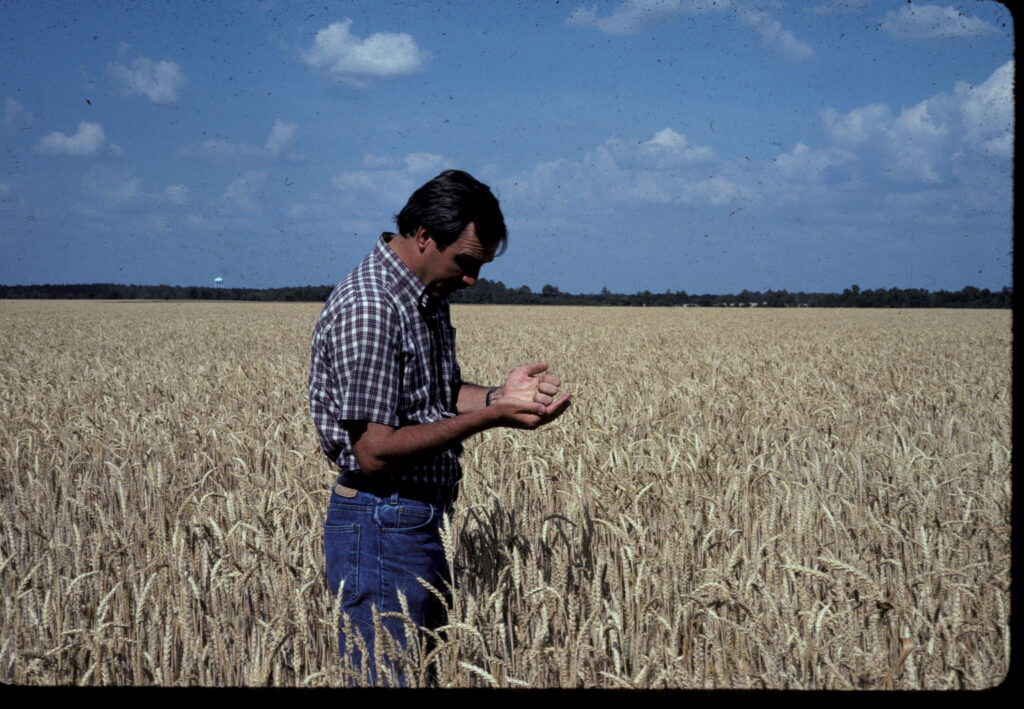
The greatest amount of wheat was produced in the state in 1982, when farmers harvested 1.48 million acres and averaged 33 bushels per acre. That year they received about $3.05 per bushel. Currently, Georgia farmers grow between 85,000-100,000 acres of wheat per year and average about 56 bushels per acre. Georgia farmers generally received about $6.14 per bushel over the last five years, falling below the average cost of production.
Rye and oats are other winter grains that farmers use for forage or feed. Rye is used primarily as a forage for grazing animals or as a cover crop to reduce soil erosion and improve water infiltration during the winter and spring months in preparation for summer crop production. Oats are used mainly for grazing and some feed grain. Occasionally some fields of barley or triticale can be found growing when a farmer has developed a local market.
Of the winter grains, rye is second in importance. It is favored for its ability to grow rapidly after planting and to withstand less favorable temperatures than wheat or oats. Livestock owners desire winter forage before the onset of cold temperatures in December and January. Planted in September and October, rye will produce more forage than wheat. Most farmers who plant row crops in either a conservation or a no-till system prefer rye. It accumulates more growth earlier in the spring than wheat or oats and therefore provides more cover and residue to protect the soil.









